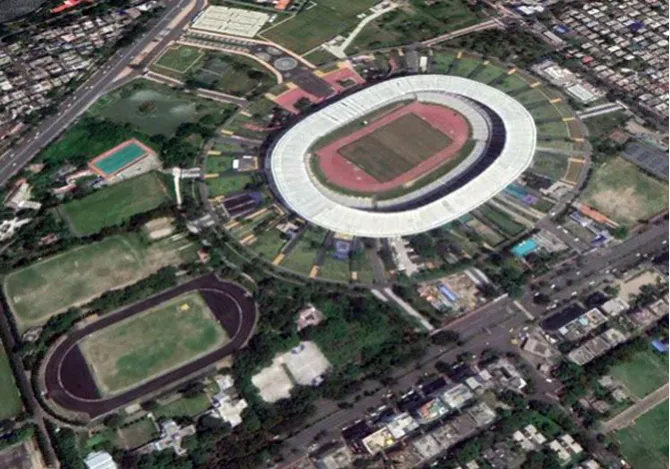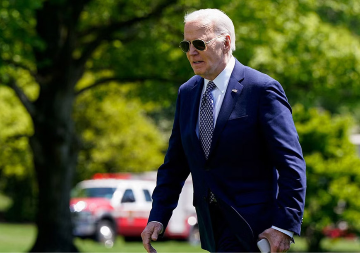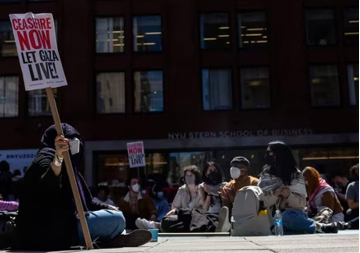
Over the past few decades, urban expansion has been a common story across the cities of the Global South, wherein peri-urban areas are increasingly incorporated within the city by changing the ecological and social landscapes. While this transition has a significant participation of private capital, urban expansion in India in the post-independence period was almost exclusively state-led. Towns like Chandigarh, Durgapur, Neyveli, Bhilai and Bokaro were characterised by heavy public investments and, in a few cases (such as Bhilai), collaboration with foreign nations (such as the erstwhile USSR), played a key role. These urban formations were based on a range of factors, including but not limited to administrative purposes, development of large-scale manufacturing units and reducing population pressure on the four metropolitan cities—Kolkata, Mumbai, New Delhi, and Chennai.
Saltlake is deemed as one of the judiciously planned and futuristic urban townships in India, with wide roads, circles, boulevards and green cover.
On a differing note, the township of Saltlake (also known as Bidhannagar), was envisaged and developed from the 1950s onwards, adjoining Kolkata, for rehabilitating a section of the refugees from the regions of undivided Bengal, which were allocated to Pakistan (currently Bangladesh). Today, Saltlake is deemed as one of the judiciously planned and futuristic urban townships in India, with wide roads, circles, boulevards and green cover. Given that some of India’s recent urban expansion and greenfield city projects have attracted criticism for poor planning and living infrastructure, Saltlake can offer an Indian model of urban regeneration and town planning.
Making of Saltlake
Following the Partition, West Bengal received a large number of refugees and migrants from East Pakistan. A large section of this population settled in and around Kolkata. The then Chief Minister of West Bengal envisaged building a township adjoining Kolkata with dual objectives: 1) To reduce the existing and impending population pressure on Kolkata; 2). To settle the refugees, particularly with a focus on creating a liveable space for the Bengali middle class.
The new township Saltlake, was planned to be developed by reclaiming some wetlands adjoining Kolkata’s eastern side; these wetlands were part of the East Kolkata Wetlands (EKW). The idea of reclaiming parts of the EKW was largely inspired by the water reclamation practices in the Netherlands. Most of the wetland designated for Saltlake was owned by the then mayor of Kolkata who handed over the land to the government against a symbolic exchange of one rupee.
Most of the wetland designated for Saltlake was owned by the then mayor of Kolkata who handed over the land to the government against a symbolic exchange of one rupee.
The survey of the saltwater lakes was undertaken by Nedeco, a Dutch engineering firm, in 1953. On 15 February 1955, the government acquired 173.7 acres for the reclamation of wetlands to the north of the Saltlake area. These included the mauzas (an administrative-territorial unit) of Nayabad, Karimpur, Hadia, Jagatipota, Pargachhia, Panchpota, Mukundapur and Tentulbari. Erstwhile Yugoslavia’s Ivan Milutinovic Invest Import Company (IMIIC) bagged the tender for the reclamation of the saltwater lakes in 1959. The layout plan for Saltlake was accepted in 1964. Between 1961 and 1967, IMIIC, which was also tasked with the desilting of Kolkata’s Hugli river, used the excavated silt from the Hugli fill and reclaimed the Saltlake wetlands. Once the reclamation was complete, the building of Saltlake township commenced.
Plan of Saltlake and the futuristic elements
As a planned town, Saltlake has a structured block pattern of neighbourhoods with each block having a proportionate open field, green cover and community markets, spread over five sectors. Saltlake was divided into rectangular plots adjacent to each other in a grid pattern akin to some cities in the Transatlantic such as New York (Manhattan district) and Barcelona. Arterial roads, parallel to each other, were laid, with regular intersections at 90 degrees. The land use pattern was fixed, with residential plots forming 50 percent of the land allocation, and this pattern has largely been maintained until now. Most of the residential blocks have nearby access to a community market and centre, which brings people together for a range of activities from everyday grocery shopping to organizing cultural, and religious events. The wide availability of open space and playgrounds, make Saltlake a unique township in India where people, both children and adults, have access to public spaces for physical activities and recreation. In addition to individual housing plots, multiple housing complexes were also established by the state government. Several state and central government departments also acquired land and built housing complexes for government employees. Such housing initiatives enabled the low and middle-income groups to settle in Saltlake.
Most of the residential blocks have nearby access to a community market and centre, which brings people together for a range of activities from everyday grocery shopping to organizing cultural, and religious events.
A key focus of Saltlake’s town planner Dobrivoje Toskovic was to ensure that the township had provisions for economic activities to ensure a vibrant atmosphere. Provisions were made for the establishment of government buildings, which were the main sites of employment until the 2000s. The IT sector, centred around Saltlake, is Eastern India’s biggest IT hub and a exports over the years. The development of the IT sector in Saltlake from the 2000s added a new lease of life to Saltlake, which further streamlined the development of consumer-centric businesses in the township.
For roadways in Saltlake, 23 percent of the area was earmarked, which is a significant improvement from the 7 percent in adjoining Kolkata. As a result, the traffic authority has reasonably managed the increasing traffic flows over the years, particularly after the development of the Information Technology (IT) hub in Saltlake. The new East-West Metro of Kolkata now connects Saltlake with central Kolkata and soon it would be connected to the Howrah station. This connectivity initiative has further facilitated the ease of connectivity to Saltlake from other parts of the greater Kolkata metropolitan area.
Saltlake: An urban template
India’s recent drive for urbanisation is considered a key factor in its aspiration to become a major economic power while providing employment opportunities for the youth. However, if we were to refer to the new urban developments across the nation (in Gurugram, Newtown Kolkata, Noida), they are largely characterised by unreasonable planning and inadequate infrastructures (water supply, drainage, waste management, connectivity, unutilised open spaces). There have been cases, where state-run institutions like the Delhi Development Authority (DDA) have developed housing colonies in unsuitable locations which failed to find buyers, resulting in unsold inventories worth INR 18,000 crores. Unfortunately, such outcomes are taking place in an era of big data, projection models and urban-centric technological innovation.With such mismanagement of urban affairs, Indian city dwellers are often tempted to look for better-governed cities elsewhere, particularly in the West; politicians frequently invoke the promise of making Indian cities the next London, Singapore, or Shanghai. However, such plans largely translate into rhetoric with no actionable insights and remain restricted to some patches of beautification in cities. It would make much more sense to look at some of the successful urban planning in India, such as that of Saltlake. A detailed empirical study can provide insights into its livable qualities while highlighting scopes for further improvements. The initiative of developing Saltlake Archives by the ‘Institute of Development Studies, Kolkata’, a social science institute, has provided public access to a wide range of qualitative and quantitative data (newspaper coverage, legislative assembly debates, maps, etc.) about Saltlake. The Saltlake Archives can be an important reference for researchers and urban planners focussing on equitable and sustainable urbanism. More significantly, the vision to enhance urban spaces around the Kolkata metropolis to accommodate refugees and delegating the task to able organisations to facilitate modern urban planning is a successful synthesis of inclusivity with futuristic goals, which can be a potent reference for today’s urban planners and administrators in India and elsewhere.
Snehashish Mitra is a Fellow with the Urban Studies at the Observer Research Foundation.
The views expressed above belong to the author(s). ORF research and analyses now available on Telegram! Click here to access our curated content — blogs, longforms and interviews.




 PREV
PREV


